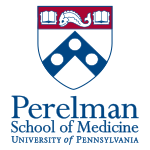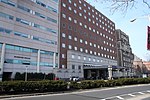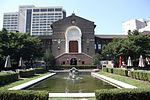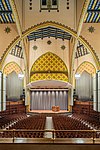Perelman Center for Advanced Medicine

The Ruth and Raymond Perelman Center for Advanced Medicine is a specialized medical facility located at 34th Street and Civic Center Boulevard, on the former site of the Philadelphia Civic Center, on the campus of the Hospital of the University of Pennsylvania. The $302-million project was designed by Rafael Viñoly Architects and completed in 2008. It was the largest capital project ever undertaken by the University of Pennsylvania Health System, until the construction of The Pavilion.The center is home to Penn Medicine's Abramson Cancer Center, radiation oncology, cardiovascular medicine and an outpatient surgical pavilion. One of the most important parts of the Center for Advanced Medicine is the Roberts Proton Therapy Center which houses the largest proton therapy center associated with a medical center in the world. The proton therapy center will be used by both the Walter Reed Army Medical Center and the Children's Hospital of Philadelphia, as well as the Penn Medicine to treat cancer patients.
Excerpt from the Wikipedia article Perelman Center for Advanced Medicine (License: CC BY-SA 3.0, Authors, Images).Perelman Center for Advanced Medicine
Civic Center Boulevard, Philadelphia
Geographical coordinates (GPS) Address Phone number Website Nearby Places Show on map
Geographical coordinates (GPS)
| Latitude | Longitude |
|---|---|
| N 39.948197 ° | E -75.193393 ° |
Address
Children's Hospital of Philadelphia
Civic Center Boulevard 3401
19104 Philadelphia
Pennsylvania, United States
Open on Google Maps







